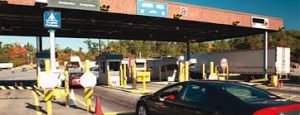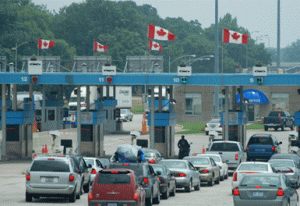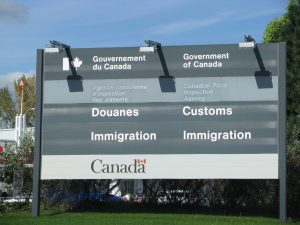How to import car from USA into Canada?
Importing vehicle from USA
Importing a Car From the United States into Canada

The expense and work required to import a vehicle is substantial. However, if you are making a purchase of a vintage car or another vehicle with sentimental value then keep reading.
Below we describe the steps for importing a personal vehicle less than 15 years old which is purchased in the U.S. and brought into Canada. If you are bringing the vehicle in for resale, commercial use, parts, or salvage, an entirely different set of rules apply and you should review the Registrar of Imported Vehicles (RIV) website carefully. There are also some differences on the rules for for buses, motorcycles and other types of vehicles. If your vehicle is a vintage car or otherwise exempt from the RIV process you will still need to file Form 1 described below.
Importing a vehicle into Canada is a strictly regulated process run by the RIV. As soon as you decide to buy a car in the U.S. you should call each of the following agencies or review their websites carefully to confirm the required paperwork and current process.
- Canadian Border Services Agency (CBSA)
- Transport Canada
- The Registrar of Imported Vehicles (RIV)
- U.S. Customs for the ports you will be using – see our page for that specific border crossing.
What Car Should You Buy to Import from the United States?
Not all vehicles can be imported into Canada. The vehicle must be on Transport Canada’s list of permissible makes and models. If there is no information on your particular vehicle, you will need to contact the manufacturer to determine admissibility status or contact Transport Canada to get a no objection letter.
Your next step is to confirm with RIV and Transport Canada what modifications to the vehicle will be necessary. There will most likely be at least a few items. It is best to have modifications made while the vehicle is still in the United States.
Make sure your vehicle has not been modified from original condition by the seller. Any modifications will greatly complicate this entire process.
You must also obtain a “proof of recall clearance” in order to register the vehicle. This document states that your vehicle has not been deemed unsafe by its manufacturer and that there are no outstanding recalls for this vehicle. You can obtain this clearance in several ways:
- A letter from the manufacturer’s head office in either country. Some manufacturers are now charging to provide this letter.
- If you are buying the car from a new or used car dealer they should provide you with a printed document for your vehicle.
- If the manufacturer has information about their vehicles’ recall status on their website, you can print this out.
- You should absolutely check out the vehicle history before making any purchase. This report will show you the history of the car, including any accidents serious enough to block entry or require additional testing.
We have heard stories from buyers that manufacturers are sometimes unresponsive to requests to provide these types of letters. If you are purchasing the vehicle from a dealer, you may need to push them to make the request on your behalf.
Insurance and License Plates for Importing Your Vehicle into Canada
Make sure you have valid Canadian car insurance for your vehicle from the moment you make the purchase. Getting insurance for an imported car may be more difficult, and more expensive, than insuring a vehicle originally purchased in Canada. Your first call should be to your current insurance company to see if you can extend your auto insurance to cover your new purchase. Carry your certificate of insurance with you throughout this entire process.
If you are buying a new or used auto from a dealer you should receive a temporary license plate which is valid in both the U.S. and Canada for one month. If you are buying from a private party, be aware that Canadian Customs may not allow a Canadian resident to drive a car with a U.S. license plates in Canada unless they are satisfied that you intend to license the car in Canada. That shouldn’t be a problem if you are following procedures.
Dealing with Customs

At least 72 business hours – three business days – prior to your border crossing, you must contact the exact U.S. border crossing station that you’re going to be using, and fax or email them the certificate of title for your car. If you do not receive a confirming email back from them, you should call to ensure that they have received your paperwork. If you skip this step you can may be turned away when you reach the border. See our pages for each border crossing to get the contact information for the port you are going to use. Before you head to the border make sure to check on the hours that they accept car imports.
When you reach the U.S. port to which you sent your documentation they will check the certificate of title against the vehicle and then stamp the title. You will then drive on to the Canadian customs office.
Clearing Canadian Customs

When you reach Canadian Customs you must have each of the following documents or you won’t be allowed to bring the car into Canada.
- Original Certificate of Title from the seller
- Bill of Sale from the seller which should show your name, Canadian address, telephone number and the amount paid for the vehicle.
- Your Certificate of insurance
- Recall clearance letter
You will then be given “Form 1” to fill out. If all is in order, they will stamp this form and let you know how much this will cost. If you show up without the proper documentation Canadian Customs can fine you up to $500. A second form, cleverly named “Form 2,” will be mailed to your home address in approximately a week.
One note: Make sure to clean your vehicle well before arriving at the border. Soil and other organic material can be a problem if they feel it could harbor disease etc.
How Much Will it Cost to Import My Vehicle into Canada?
Now comes everybody’s favorite event – paying import taxes. This is pretty tricky stuff so you should discuss this with RIV and Canadian Customs Officials to make sure you know exactly what you will pay. Here are the different fees and taxes you may face:
- Canadian Registrar of Imported Vehicle Fee – $235 CAD
- If the vehicle identification number (VIN) starts with a number 1, 2, 3, 4, or 5, then it was made in North America and there is no duty under NAFTA. Otherwise you will pay a duty of about 6.1% .
- Goods and Services Tax (GST) – 5% .
- Harmonized Sales Tax (HST) for your particular province.
- If you are entering a border crossing in Quebec you will pay the Quebec Services Tax (QST).
- If your vehicle has air conditioning there will be an excise tax of around $100.
- Gas Guzzler or Green Levy Tax – If your car is manufactured after March 19th 2007 and consumes 13 litres or more per 100 km it will may be subject to an excise tax of $1,000 to $4,000.
Note: if Canadian Customs suspects something is not right and feel the value of your vehicle should be higher than you declared, they have the discretion to use the Canadian Red book value instead of the amount shown on your bill of sale.
What to Do When You Reach Home
When you finally get home here is what you will do to complete the process:
- Fill out Form 2 when you receive it.
- Take the car, Form 1 & 2, as well as the “Proof of Recall Clearance” letter, to a RIV certified vehicle inspection center as soon as possible. You can find the nearest center by using the RIV’s website.
- As long as you did your research and made your Canadian modifications up front, your car should pass inspection easily. You shouldn’t have to pay for the tests unless additional modifications are required. Ontario does have some additional tests not required in other provinces.
- Once the inspection agency has approved your vehicle they will stamp Form 1. You then have 45 days to complete any additional modifications they specify.
- Take your stamped forms, and all of your other documentation to the license plate issuing office. You will then pay Provincial Sales Tax to obtain your license plate and sticker, which will be mailed to you in a few days. Make sure you pay your registration fees within no more than 45 days after the date of import to avoid non-compliance notifications to law enforcement.
- Within a few days, you will receive by mail your Canadian Certification Label to affix to the car.

